Use Ofstereoselective Transaminase In Asymmetric Synthesis Of Chiral Amine
CHENG; Zhanbing ; et al.
U.S. patent application number 16/630297 was filed with the patent office on 2020-05-21 for use ofstereoselective transaminase in asymmetric synthesis of chiral amine. The applicant listed for this patent is ABIOCHEM BIOTECHNOLOGY CO., LTD. Invention is credited to Zhanbing CHENG, Shaonan DING, Xudong QU, Zhenhua TIAN, Tao ZHANG.
| Application Number | 20200157587 16/630297 |
| Document ID | / |
| Family ID | 65001043 |
| Filed Date | 2020-05-21 |





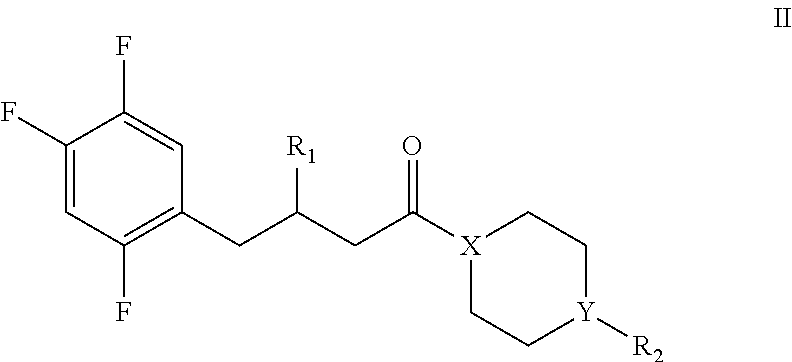





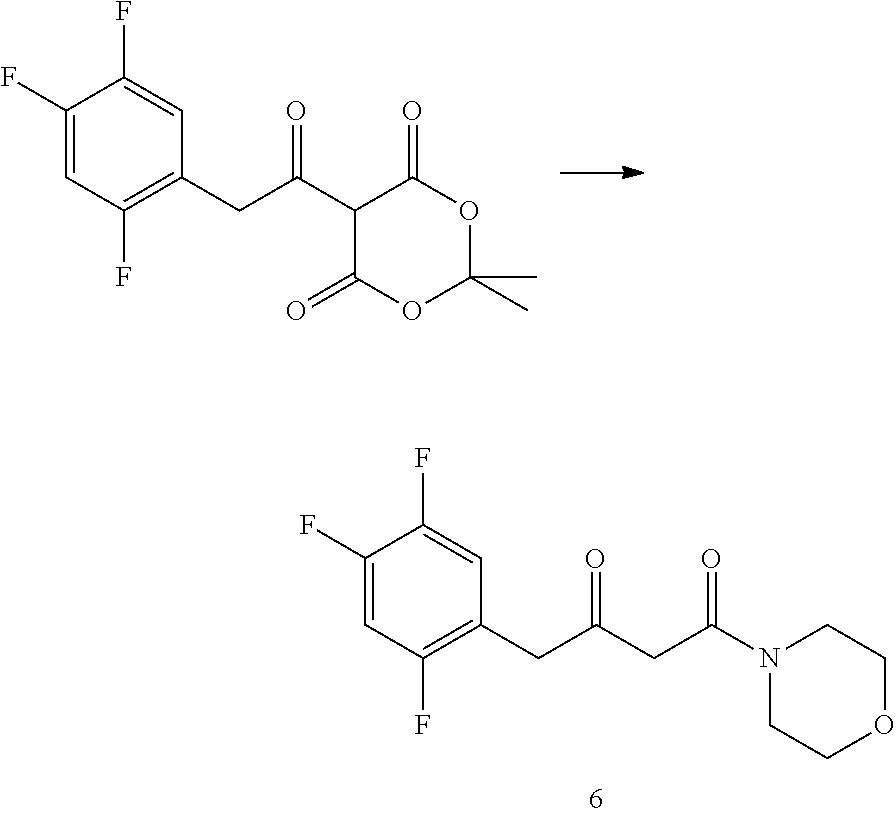
View All Diagrams
| United States Patent Application | 20200157587 |
| Kind Code | A1 |
| CHENG; Zhanbing ; et al. | May 21, 2020 |
USE OFSTEREOSELECTIVE TRANSAMINASE IN ASYMMETRIC SYNTHESIS OF CHIRAL AMINE
Abstract
Use of a stereoselective transaminase in the asymmetric synthesis of a chiral amine. In particular, provided is use of a polypeptide in the production of a chiral amine or a downstream product using a chiral amine as a precursor. Further provided is a method for producing a chiral amine, comprising culturing a strain expressing the polypeptide so as to obtain a chiral amine. Further provided are a chiral amine production strain and a method for constructing the chiral amine production strain. The stereoselective transaminase has a broad substrate spectrum and thus has a broad application potential in the preparation of a chiral amine.
| Inventors: | CHENG; Zhanbing; (Shanghai, CN) ; ZHANG; Tao; (Shanghai, CN) ; TIAN; Zhenhua; (Shanghai, CN) ; QU; Xudong; (Shanghai, CN) ; DING; Shaonan; (Shanghai, CN) | ||||||||||
| Applicant: |
|
||||||||||
|---|---|---|---|---|---|---|---|---|---|---|---|
| Family ID: | 65001043 | ||||||||||
| Appl. No.: | 16/630297 | ||||||||||
| Filed: | July 10, 2018 | ||||||||||
| PCT Filed: | July 10, 2018 | ||||||||||
| PCT NO: | PCT/CN2018/095148 | ||||||||||
| 371 Date: | January 10, 2020 |
| Current U.S. Class: | 1/1 |
| Current CPC Class: | C12Y 206/01018 20130101; C12N 9/1096 20130101; C07D 295/185 20130101; C12P 17/12 20130101; C12P 13/001 20130101; C12P 13/04 20130101; C12P 17/182 20130101; C07C 227/32 20130101; C07C 229/08 20130101; C07B 2200/07 20130101; C12P 17/14 20130101; C07C 209/24 20130101; C12P 13/06 20130101; C12Y 206/01 20130101; C07D 487/04 20130101; C07C 227/32 20130101; C07C 229/08 20130101; C07C 209/24 20130101; C07C 211/27 20130101 |
| International Class: | C12P 13/06 20060101 C12P013/06; C12N 9/10 20060101 C12N009/10 |
Foreign Application Data
| Date | Code | Application Number |
|---|---|---|
| Jul 11, 2017 | CN | 20170561640.3 |
Claims
1. A method for producing a chiral amine or a downstream product with the chiral amine as precursor using a polypeptide, wherein the polypeptide is: (a1) a polypeptide having an amino acid sequence shown in SEQ ID NO: 1; or (b1) a polypeptide derived from the polypeptide having an amino acid sequence shown in SEQ ID NO: 1 and formed by substitution, deletion, or addition of one or more, preferably 1-20, more preferably 1-15, more preferably 1-10, more preferably 1-3, and most preferably one amino acid residue(s) in the amino acid sequence shown in SEQ ID NO: 1, and having the function of the polypeptide of (a1).
2. The method of claim 1, wherein the polypeptide of (b1) is a polypeptide derived from the polypeptide having an amino acid sequence shown in SEQ ID NO: 1 and formed by substitution, deletion, or addition of one or more, preferably 1-20, more preferably 1-15, more preferably 1-10, more preferably 1-3, and most preferably one amino acid residue(s) at either end of the amino acid sequence shown in SEQ ID NO: 1, and having the function of the polypeptide of (a1).
3. The method of claim 1, wherein the amino acid sequence of the polypeptide is shown in SEQ ID NO: 1.
4. The method of claim 1, wherein the chiral amine includes the following compounds 1a-8a or a pharmaceutically acceptable salt thereof: ##STR00023##
5. The method of claim 1, wherein the downstream product with the chiral amine as precursor includes: sitagliptin (compound 5a), raw material of a chiral acid resolving agent or a chiral drug intermediate (compound 1a), dolutegravir intermediate (compound 3a), raw material of a chiral drug intermediate (compound 2a, compound 4a), sitagliptin intermediate (compound 6a, compound 7a, and compound 8a).
6. A method for producing a chiral amine, comprising: (a) carrying out a reaction shown in equation I to form a chiral amine in a liquid reaction system, using a prochiral carbonyl compound as a substrate, in the presence of a prosthetic group and under the catalysis of stereoselective transaminase; ##STR00024## (b) optionally isolating the chiral amine from the reaction system after the reaction of the previous step, wherein the stereoselective transaminase is: (a1) a polypeptide having an amino acid sequence shown in SEQ ID NO: 1; or (b1) a polypeptide derived from the polypeptide having an amino acid sequence shown in SEQ ID NO: 1 and formed by substitution, deletion, or addition of one or more, preferably 1-20, more preferably 1-15, more preferably 1-10, more preferably 1-3, and most preferably one amino acid residue(s) in the amino acid sequence shown in SEQ ID NO: 1, and having the function of the polypeptide of (a1).
7. A chiral amine producing strain, expressing following polypeptide: (a1) a polypeptide having an amino acid sequence shown in SEQ ID NO: 1; or (b1) a polypeptide derived from the polypeptide having an amino acid sequence shown in SEQ ID NO: 1 and formed by substitution, deletion, or addition of one or more, preferably 1-20, more preferably 1-15, more preferably 1-10, more preferably 1-3, and most preferably one amino acid residue(s) in the amino acid sequence shown in SEQ ID NO: 1, and having the function of the polypeptide of (A).
8. A method for producing a chiral amine, comprising the steps of: 1) culturing the producing strain of claim 7 under production conditions to obtain a chiral amine; 2) optionally, isolating the chiral amine from the culture system of 1).
9. A method for constructing a chiral amine producing strain, comprising: modifying the strain to comprise an expression vector expressing the following polypeptide or to integrate a gene expressing the following polypeptide into its genome, and the polypeptide is: (a1) a polypeptide having an amino acid sequence shown in SEQ ID NO: 1; or (b1) a polypeptide derived from the polypeptide having an amino acid sequence shown in SEQ ID NO: 1 and formed by substitution, deletion, or addition of one or more, preferably 1-20, more preferably 1-15, more preferably 1-10, more preferably 1-3, and most preferably one amino acid residue(s) in the amino acid sequence shown in SEQ ID NO: 1, and having the function of the polypeptide of (a1).
10. The preparation method of claim 9, wherein sequence of the gene is selected from the group consisting of: (i) a sequence shown in SEQ ID NO: 2; (ii) a polynucleotide sequence complementary to the sequence defined in (i); or (iii) any polynucleotide sequence having at least 70%, preferably at least 75%, 80%, 85%, 90%, more preferably at least 95%, 96%, 97%, 98%, 99% sequence identity of the sequence defined in (i), or a complementary sequence thereof.
11. A compound of formula IL, or a pharmaceutically acceptable salt thereof, or a stereoisomer thereof: ##STR00025## wherein, R.sub.1 is selected from the group consisting of: none, oxo (.dbd.O), halogen, --OH, --NH.sub.2, substituted or unsubstituted C1-C.sub.8 alkyl, substituted or unsubstituted C.sub.3-C.sub.8 cycloalkyl, substituted or unsubstituted C.sub.1-C.sub.8 alkoxy, substituted and unsubstituted C.sub.3-C.sub.8 cycloalkoxy; R.sub.2 is selected from the group consisting of: none, halogen, --OH, --NH.sub.2, substituted or unsubstituted C.sub.1-C.sub.8 alkyl, substituted or unsubstituted C.sub.3-C.sub.8 cycloalkyl, substituted or unsubstituted C.sub.1-C.sub.8 alkoxy, substituted and unsubstituted C.sub.3-C.sub.8 cycloalkoxy; X is selected from the group consisting of: C and N; Y is selected from the group consisting of: C, N, O, and S Wherein R.sup.2 is none when Y is O or S.'
12. The compound of claim 11, or the pharmaceutically acceptable salt thereof, or the stereoisomer thereof, wherein the compound of formula II includes the following compounds: ##STR00026##
13. Use of the compound of formula II of claim 11, or a pharmaceutically acceptable salt thereof, or a stereoisomer thereof, for preparing a sitagliptin intermediate Boc-(R)-3-amino-4-(2,4,5-trifluorophenyl) butyric acid.
14. The use of claim 13, wherein the compound of formula II includes the following compounds: ##STR00027##
Description
TECHNICAL FIELD
[0001] The invention relates to the field of biotechnology, and particularly relates to a highly active transaminase, a use of the transaminase as a catalyst in asymmetric synthesis of chiral amines, and a method for producing chiral amines.
BACKGROUND
[0002] Chiral amines are important intermediates and active ingredients in many drugs. For example, (3R)-3-amino-1-[3-(trifluoromethyl)-5,6-dihydro-1,2,4-triazolo[4,3-a] pyrazine-7 (8H)-yl]-4-(2,4,5-trifluorophenyl) butan-1-one is an effective ingredient for treating type II diabetes. However, it is difficult to obtain optically pure products by existing organic synthesis methods, which usually require metal catalysts for asymmetric synthesis and are expensive, with metal residue and difficult post processing. Therefore, there is an urgent need to develop environmental methods for the production of chiral amines.
[0003] Transaminase, also known as aminotransferase, is a type of enzyme that catalyzes the reversible transfer of amino groups between amino compounds and carbonyl compounds. According to the position of amino group as the aminotransferases' substrate, they can be divided into a-transaminase and .omega.-transaminase. a-transaminase is more common and can only catalyze the transfer of a-amino groups. .omega.-transaminase is relatively rare. In addition to catalyzing the transfer of a-amino groups, .omega.-transaminase can also catalyze the transfer of non-a-amino groups. It has wider substrate spectrum and stricter stereoselectivity, which can catalyze prochiral carbonyl compounds to produce chiral amines under mild reaction conditions. In addition, .omega.-transaminase takes pyridoxal phosphate as a prosthetic group and no additional co-factor cycle is needed in the catalytic reaction process, which is advantageous for industrial production.
[0004] For example, the US patent U.S. Pat. No. 8,293,507 discloses that the biocatalyst obtained by Codexis by engineering .omega.-transaminase derived from Arthrobacter replaces the rhodium catalyst in the chemical process, and the transamination product has an ee value of 99% with a substrate feed of 100 g/L.
##STR00001##
[0005] Due to the stereoisomerism specificity of the enzyme, it is very important to obtain a specific stereoselective enzyme. It has been reported in the literature that among .omega.-transaminases, S-selective enzymes are more common, while R-selective enzymes are relatively rare. Therefore, it is of great significance to discover an R-selective .omega.-transaminase with industrial application prospects for the production of chiral amines.
SUMMARY OF THE INVENTION
[0006] One of the objects of the present invention is to provide an use of a polypeptide in the production of a chiral amine or a downstream product with the chiral amine as precursor.
[0007] Another object of the present invention is to provide a method for producing chiral amines.
[0008] Another object of the present invention is to provide a chiral amine producing strain.
[0009] Another object of the present invention is to provide a method for constructing a chiral amine producing strain.
[0010] In a first aspect of the invention, it provides a use of a polypeptide in the production of a chiral amine or a downstream product with the chiral amine as precursor, wherein the polypeptide is: [0011] (a1) a polypeptide having an amino acid sequence shown in SEQ ID NO: 1; or [0012] (b1) a polypeptide derived from the polypeptide having an amino acid sequence shown in SEQ ID NO: 1 and formed by substitution, deletion, or addition of one or more, preferably 1-20, more preferably 1-15, more preferably 1-10, more preferably 1-3, and most preferably one amino acid residue(s) in the amino acid sequence shown in SEQ ID NO: 1, and having the function of the polypeptide of (a1).
[0013] In another preferred embodiment, the chiral amine is formed by an asymmetric synthesis reaction of a prochiral carbonyl compound.
[0014] In another preferred embodiment, the prochiral carbonyl compound is selected from the group consisting of:
##STR00002##
[0015] In another preferred embodiment, the polypeptide of (b1) is a polypeptide derived from the polypeptide having an amino acid sequence shown in SEQ ID NO: 1 and formed by substitution, deletion, or addition of one or more, preferably 1-20, more preferably 1-15, more preferably 1-10, more preferably 1-3, and most preferably one amino acid residue(s) at either end of the amino acid sequence shown in SEQ ID NO: 1, and having the function of the polypeptide of (a1).
[0016] In another preferred embodiment, the amino acid sequence of the polypeptide is as shown in SEQ ID NO: 1.
[0017] In another preferred embodiment, the amino acid sequence of the polypeptide is any polypeptide sequence that has at least 70%, preferably at least 75%, 80%, 85%, 90%, and more preferably at least 95%, 96%, 97%, 98%, or 99% sequence identity of the amino acid sequence shown in SEQ ID NO: 1.
[0018] In another preferred embodiment, the chiral amine includes the following compounds 1a-8a or a pharmaceutically acceptable salt thereof:
##STR00003##
[0019] In another preferred embodiment, the downstream product with the chiral amine as precursor includes: sitagliptin (compound 5a), raw material of a chiral acid resolving agent or a chiral drug intermediate (compound 1a), dolutegravir intermediate (compound 3a), and raw material of a chiral drug intermediate (compound 2a, compound 4a), sitagliptin intermediate (compound 6a, compound 7a, and compound 8a).
[0020] In a second aspect of the invention, it provides a method for producing a chiral amine, which comprises: [0021] (a) carrying out a reaction shown in equation I to form a chiral amine in a liquid reaction system, using a prochiral carbonyl compound as a substrate, in the presence of a prosthetic group and under the catalysis of stereoselective transaminase;
[0021] ##STR00004## [0022] (b) optionally isolating the chiral amine from the reaction system after the reaction of the previous step.
[0023] In another preferred embodiment, the concentration of the prochiral carbonyl compound in the reaction system is 1 g/L-1000 g/L, preferably 5 g/L-500 g/L, more preferably 10 g/L-100 g/L, more preferably 5 g/L-50 g/L, and most preferably 20 g/L-50 g/L.
[0024] In another preferred embodiment, the concentration of the stereoselective transaminase protein in the reaction system is 1-500 mg/mL, preferably 5-200 mg/mL, more preferably 10-100 mg/mL, and most preferably 20-80 mg/mL.
[0025] In another preferred embodiment, the stereoselective transaminase is: [0026] (a1) a polypeptide having an amino acid sequence shown in SEQ ID NO: 1; or [0027] (b1) a polypeptide derived from the polypeptide having an amino acid sequence shown in SEQ ID NO: 1 and formed by substitution, deletion, or addition of one or more, preferably 1-20, more preferably 1-15, more preferably 1-10, more preferably 1-3, and most preferably one amino acid residue(s) in the amino acid sequence shown in SEQ ID NO: 1, and having the function of the polypeptide of (a1).
[0028] In another preferred embodiment, the amino acid sequence of the polypeptide is as shown in SEQ ID NO: 1.
[0029] In another preferred embodiment, the amino acid sequence of the polypeptide is any polypeptide sequence that has at least 70%/o, preferably at least 75%, 80%, 85%, 90%/o, and more preferably at least 95%, 96%, 97%, 98%, or 99% sequence identity of the amino acid sequence shown in SEQ ID NO: 1.
[0030] In another preferred embodiment, the prochiral carbonyl compound is selected from the group consisting of:
##STR00005##
[0031] In another preferred embodiment, the prosthetic group is pyridoxal phosphate.
[0032] In another preferred embodiment, the concentration of the prosthetic group in the reaction system is 1-200 mM, preferably 5-150 mM, more preferably 10-100 mM, and most preferably 5-50 mM.
[0033] In another preferred embodiment, the temperature in step (a) is 5-50.degree. C., preferably 10-45.degree. C., more preferably 20-40.degree. C., and most preferably 25-35.degree. C.
[0034] In another preferred embodiment, the pH in step (a) is 6-10, preferably 7-10, more preferably 7.5-8.5.
[0035] In a third aspect of the invention, it provides a chiral amine producing strain expressing the following polypeptide: [0036] (a1) a polypeptide having an amino acid sequence shown in SEQ ID NO: 1; or [0037] (b1) a polypeptide derived from the polypeptide having an amino acid sequence shown in SEQ ID NO: 1 and formed by substitution, deletion, or addition of one or more, preferably 1-20, more preferably 1-15, more preferably 1-10, more preferably 1-3, and most preferably one amino acid residue(s) in the amino acid sequence shown in SEQ ID NO: 1, and having the function of the polypeptide of (A).
[0038] In another preferred embodiment, the polypeptide is a polypeptide derived from the polypeptide having an amino acid sequence shown in SEQ ID NO: 1 and formed by substitution, deletion, or addition of one or more, preferably 1-20, more preferably 1-15, more preferably 1-10, more preferably 1-3, and most preferably one amino acid residue(s) at either end of the amino acid sequence shown in SEQ ID NO: 1, and having the function of the polypeptide of (a1).
[0039] In another preferred embodiment, the amino acid sequence of the polypeptide is as shown in SEQ ID NO: 1.
[0040] In another preferred embodiment, the amino acid sequence of the polypeptide is any polypeptide sequence that has at least 70%, preferably at least 75%, 80%, 85%, 90%, and more preferably at least 95%, 96%, 97%, 98%, or 99% sequence identity of the amino acid sequence shown in SEQ ID NO: 1.
[0041] In another preferred embodiment, the producing strain is a bacteria.
[0042] In another preferred embodiment, the bacteria is Escherichia coli.
[0043] In another preferred embodiment, the Escherichia coli is Escherichia coli BL21.
[0044] In a fourth aspect of the invention, it provides a method for producing a chiral amine, which comprises the steps of: [0045] 1) culturing the producing strain of the third aspect of the invention under production conditions to obtain a chiral amine; [0046] 2) optionally isolating the chiral amine from the culture system of 1).
[0047] In another preferred embodiment, an appropriate amount of pyridoxal phosphate is added in step 1) of the method.
[0048] In a fifth aspect of the invention, it provides a method for constructing a chiral amine producing strain, which comprises: [0049] modifying the strain to comprise an expression vector expressing the following polypeptide or to integrate a gene expressing the following polypeptide into its genome, and the polypeptide is: [0050] (a1) a polypeptide having an amino acid sequence shown in SEQ ID NO: 1; or [0051] (b1) a polypeptide derived from the polypeptide having an amino acid sequence shown in SEQ ID NO: 1 and formed by substitution, deletion, or addition of one or more, preferably 1-20, more preferably 1-15, more preferably 1-10, more preferably 1-3, and most preferably one amino acid residue(s) in the amino acid sequence shown in SEQ ID NO: 1, and having the function of the polypeptide of (a1).
[0052] In another preferred embodiment, the polypeptide of (b1) is a polypeptide derived from the polypeptide having an amino acid sequence shown in SEQ ID NO: 1 and formed by substitution, deletion, or addition of one or more, preferably 1-20, more preferably 1-15, more preferably 1-10, more preferably 1-3, and most preferably one amino acid residue(s) at either end of the amino acid sequence shown in SEQ ID NO: 1, and having the function of the polypeptide of (a1).
[0053] In another preferred embodiment, the amino acid sequence of the polypeptide is as shown in SEQ ID NO: 1.
[0054] In another preferred embodiment, the amino acid sequence of the polypeptide is any polypeptide sequence that has at least 70%, preferably at least 75%, 80%, 85%, 90%, and more preferably at least 95%, 96%, 97%, 98%, or 99% sequence identity of the amino acid sequence shown in SEQ ID NO: 1.
[0055] In another preferred embodiment, the sequence of the gene is selected from the group consisting of: [0056] (i) the sequence shown in SEQ ID NO: 2; [0057] (ii) a polynucleotide sequence complementary to the sequence defined in (i); or [0058] (iii) any polynucleotide sequence having at least 70% (preferably at least 75%, 80%, 85%, 90%, more preferably at least 95%, 96%, 97%, 98%, 99%) sequence identity of the sequence defined in (i), or a complementary sequence thereof.
[0059] In another preferred embodiment, the gene is constructed on an expression vector.
[0060] In a sixth aspect of the invention, it provides a compound of formula II, or a pharmaceutically acceptable salt thereof, or a stereoisomer thereof:
##STR00006## [0061] wherein, [0062] R.sub.1 is selected from the group consisting of: none, oxo (.dbd.O), halogen, --OH, --NH.sub.2, substituted or unsubstituted C.sub.1-C.sub.5 alkyl, substituted or unsubstituted C.sub.3-C.sub.8 cycloalkyl, substituted or unsubstituted C.sub.1-C.sub.8 alkoxy, substituted and unsubstituted C.sub.3-C.sub.8 cycloalkoxy; [0063] R.sub.2 is selected from the group consisting of: none, halogen, --OH, --NH.sub.2, substituted or unsubstituted C.sub.1-C.sub.5 alkyl, substituted or unsubstituted C.sub.3-C.sub.8 cycloalkyl, substituted or unsubstituted C.sub.1-C.sub.8 alkoxy, substituted and unsubstituted C.sub.3-C.sub.8 cycloalkoxy; [0064] X is selected from the group consisting of: C and N; [0065] Y is selected from the group consisting of: C, N, O, and S; [0066] Wherein R.sub.2 is none when Y is O or S.
[0067] In another preferred embodiment, R.sub.1 is oxo (.dbd.O).
[0068] In another preferred embodiment, R.sub.1 is --NH.sub.2.
[0069] In another preferred embodiment, X is N.
[0070] In another preferred embodiment, Y is O.
[0071] In another preferred embodiment, the compound of formula II includes the following compounds:
##STR00007##
[0072] In a seventh aspect of the invention, it provides a use of the compound of the sixth aspect of the invention, or a pharmaceutically acceptable salt thereof, or a stereoisomer thereof, for preparing a sitagliptin intermediate Boc-(R)-3-amino-4-(2,4,5-trifluorophenyl) butyric acid.
[0073] In another preferred embodiment, the compound of formula II includes the following compounds:
##STR00008##
[0074] It is to be understood that the various technical features of the present invention mentioned above and the various technical features specifically described hereinafter (as in the Examples) may be combined with each other within the scope of the present invention to constitute a new or preferred technical solution, which will not be repeated one by one herein, due to space limitations.
DETAILED DESCRIPTION
[0075] After extensive and intensive studies, the inventors have unexpectedly discovered a polypeptide (.omega.-transaminase) which can be used as a stereoselective catalyst to efficiently convert a prochiral carbonyl compound to an R stereoselective chiral amine. The .omega.-transaminase according to the present invention has strict R stereoselectivity and a wide substrate spectrum, and has great application prospects in the production of chiral amines and chiral drugs. The present invention is completed on this basis.
Definitions
[0076] Unless otherwise defined, all technical and scientific terms used herein have the same meaning as commonly understood by one ordinary skill in the art of the invention.
[0077] As used herein, when used in reference to a particular recited value, the term "about" means that the value can vary by no more than 1% from the recited value. For example, as used herein, the expression "about 100" comprises all values between 99 and 101 (eg, 99.1, 99.2, 99.3, 99.4, etc.).
[0078] As used herein, the term "including" or "comprising (comprise)" may be open, semi-closed, and closed. In other words, the term also includes "essentially consisting of" or "consisting of".
[0079] Unless otherwise defined, the following terms used in the specification and claims have meanings as commonly understood by a person skilled in the art. Unless otherwise stated, all patents, patent applications, and published materials cited herein are incorporated by reference in their entirety.
[0080] It should be understood that the above brief description and the following detailed description are exemplary and explanatory only and are not restrictive of the subject matter of the invention. In the application, the singular used includes the plural unless otherwise specifically stated. It must be noted that the singular form used in the specification and claims includes the plural form of the referenced thing unless otherwise clearly stated in the context. It should also be noted that "or", "either" is used to mean "and/or" unless otherwise stated. In addition, the term "including" or "comprising (comprise)" may be open, semi-closed, and closed. In other words, the term also includes "essentially consisting of" or "consisting of".
[0081] Definitions of standard chemical terms can be found in references (including Carey and Sundberg "ADVANCED ORGANIC CHEMISTRY 4TH ED." Vols. A (2000) and B (2001), Plenum Press, New York). Unless otherwise stated, conventional methods within the skill of the art, such as mass spectrometry, NMR, IR, and UV/VIS spectroscopy and pharmacological methods, are used. Unless specifically defined, the terms used in the descriptions of analytical chemistry, organic synthetic chemistry, and medicinal and medicinal chemistry are known in the art. Standard techniques can be used in chemical synthesis, chemical analysis, drug preparation, formulation and delivery, and treatment of patients. For example, the reaction and purification can be performed according to a manufacturer's instruction for use of a kit, or according to a manner known in the art or the description of the invention. The techniques and methods described above can generally be implemented according to conventional methods well known in the art, based on descriptions in several summary and more specific literatures cited and discussed in the specification. In the specification, groups and their substituents may be selected by the skilled in the art to provide stable moieties and compounds.
[0082] When a substituent is described by a conventional chemical formula written from left to right, the substituent also includes a chemically equivalent substituent obtained when the structural formula is written from right to left. For example, --CH.sub.2O--is equivalent to --OCH.sub.2--.
[0083] The captions used herein are for organizational purposes only and should not be construed as restriction of the subject matter. All literatures or parts of literatures cited in the application, including but not limited to patents, patent applications, articles, books, operating manuals and papers, are incorporated herein by reference in their entirety.
[0084] In front of certain chemical groups defined herein, a simplified symbol is used to represent the total number of carbon atoms present in the group. For example, C1-C6 alkyl refers to an alkyl group as defined below having a total of 1 to 6 carbon atoms. The total number of carbon atoms in the simplified symbol does not include the number of carbons that may be present in the substituents of the group.
[0085] In addition to the foregoing, when used in the specification and claims of the present application, the following terms have the meanings indicated below, unless specifically stated otherwise.
[0086] In the present application, the term "halogen" refers to fluorine, chlorine, bromine or iodine.
[0087] "Hydroxy" refers to --OH group.
[0088] In the present application, as a group or part of another group (for example, used in a group such as a halogen-substituted alkyl group), the term "alkyl" refers to a fully saturated straight or branched hydrocarbon chain group, and consists of only carbon and hydrogen atoms, which has, for example, 1 to 7 carbon atoms, and is connected to the rest of the molecule by a single bond. For example, the term "alkyl" includes but is not limited to methyl, ethyl, n-propyl, isopropyl, n-butyl, isobutyl, sec-butyl, tert-butyl, n-pentyl, 2-methylbutyl, 2, 2-dimethylpropyl, n-hexyl, heptyl and the like.
[0089] Polypeptide
[0090] As used herein, the term "polypeptide" or "polypeptide of the invention" or "polypeptide of the present invention" or ".omega.-transaminase" or "stereoselective transaminase" has same meaning, and is used interchangeably herein. All of them refer to a protein that catalyzes the production of chiral amines by a prechiral carbonyl compound. The polypeptide is not naturally existed in E. coli, which is an exogenous protein.
[0091] Based on the knowledge of the prior art, it is not difficult for the ordinary skilled in the art to know that the change of a few amino acid residues in certain regions of a polypeptide, such as non-important regions, will not substantially change the biological activity. For example, the sequence obtained by appropriate substitution of certain amino acids do not affect the activity (see Watson et al., Molecular Biology of The Gene, Fourth Edition, 1987, The Benjamin/Cummings Pub. Co. P224). Thus, an ordinary skilled in the art would be able to perform such a substitution and ensure that the obtained molecule still has the desired biological activity.
[0092] Therefore, in a specific embodiment, the polypeptide of the invention may be: (a1) a polypeptide having an amino acid sequence shown in SEQ ID NO: 1; or (b1) a polypeptide derived from the polypeptide having an amino acid sequence shown in SEQ ID NO: 1 and formed by substitution, deletion, or addition of one or more, preferably 1-20, more preferably 1-15, more preferably 1-10, more preferably 1-3, and most preferably one amino acid residue(s) in the amino acid sequence shown in SEQ ID NO: 1, and having the function of the polypeptide of (a1).
[0093] In a preferred embodiment, the polypeptide is a polypeptide derived from the polypeptide having an amino acid sequence shown in SEQ ID NO: 1 and formed by substitution, deletion, or addition of one or more, preferably 1-20, more preferably 1-15, more preferably 1-10, more preferably 1-3, and most preferably one amino acid residue(s) at either end of the amino acid sequence shown in SEQ ID NO: 1, and having the function of the polypeptide of (a1).
[0094] In a preferred embodiment, the amino acid sequence of the polypeptide is as shown in SEQ ID NO: 1.
[0095] In another preferred embodiment, the amino acid sequence of the polypeptide is any polypeptide sequence that has at least 70%, preferably at least 75%, 80%, 85%, 90%, and more preferably at least 95%, 96%, 97%, 98%, or 99% sequence identity of the amino acid sequence shown in SEQ ID NO: 1.
[0096] In a specific embodiment, the polypeptide of the invention represents a protein having an amino acid sequence as shown in SEQ ID NO: 1, and the coding sequence thereof is shown as SEQ ID NO: 2.
[0097] In the present invention, the polypeptide of the invention includes a mutant in which at most 20, preferably at most 10, still preferably at most 3, more preferably at most 2, and most preferably at most 1 amino acid is substituted by an amino acid of similar or close property in comparison with the polypeptide having an amino acid sequence as shown in SEQ ID NO: 1. These mutants with conservative variant are formed by amino acid substitutions as shown in the table below.
TABLE-US-00001 Initial Representative Preferred residue substitution substitution Ala (A) Val; Leu; Ile Val Arg (R) Lys; Gln; Asn Lys Asn (N) Gln; His; Lys; Arg Gln Asp (D) Glu Glu Cys (C) Ser Ser Gln (Q) Asn Asn Glu (E) Asp Asp Gly (G) Pro; Ala Ala His (H) Asn; Gln; Lys; Arg Arg Ile (I) Leu; Val; Met; Ala; Phe Leu Leu (L) Ile; Val; Met; Ala; Phe Ile Lys (K) Arg; Gln; Asn Arg Met (M) Leu; Phe; Ile Leu Phe (F) Leu; Val; Ile; Ala; Tyr Leu Pro (P) Ala Ala Ser (S) Thr Thr Thr (T) Ser Ser Trp (W) Tyr; Phe Tyr Tyr (Y) Trp; Phe; Thr; Ser Phe Val (V) Ile; Leu; Met; Phe; Ala Leu
[0098] The present invention also provides the polynucleotide encoding the polypeptide of the present invention. The term "polynucleotide encoding a polypeptide" may include a polynucleotide that encodes the polypeptide, or a polynucleotide that also comprises additional coding and/or non-coding sequences.
[0099] Therefore, as used herein, "comprising", "having" or "including" includes "containing", "consisting mainly of", "consisting essentially of", and "consisting of". "Consisting mainly of", "consisting essentially of" and "consisting of" are subordinate concepts of "comprising", "having" or "including".
[0100] In a specific embodiment, the homology or sequence identity may be 80% or more, preferably 90% or more, more preferably 95%-98%, and most preferably 99% or more.
[0101] Method for determining sequence homology or identity that are well known to the ordinary skilled in the art includes, but are not limited to: Computer Molecular Biology, edited by Lesk, A. M., Oxford University Press, New York, 1988; Biocomputing: Informatics and Genome Projects, edited by Smith, D. W., Academic Press, New York, 1993; Computer Analysis of Sequence Data, Part I, edited by Griffin, A. M, and Griffin, H. G., Humana Press, New Jersey, 1994; Sequence Analysis in Molecular Biology, von Heinje, G., Academic Press, 1987, and Sequence Analysis Primer, edited by Gribskov, M, and Devereux, J., M Stockton Press, New York, 1991 and Carillo, H. & Lipman, D., SIAM J. Applied Math., 48:1073(1988). The preferred method for determining identity is to obtain the greatest match between the sequences tested. Methods for determining identity are compiled into publicly available computer programs. Preferred computer program method for determining identity between two sequences includes, but are not limited to, the GCG software package (Devereux, J. et al., 1984), BLASTP, BLASTN, and FASTA (Altschul, S, F. et al., 1990). The BLASTX program is available to the public from NCBI and other sources (BLAST Handbook, Altschul, S. et al., NCBI NLM NIH Bethesda, Md. 20894; Altschul, S. et al., 1990). The well-known Smith Waterman algorithm can also be used to determine identity.
[0102] The Use of the Polypeptide
[0103] The inventors have unexpectedly discovered that the polypeptide of the present invention has a stereoselective transaminase (.omega.-transaminase) activity and can be used to produce a chiral amine or a downstream product with chiral amine as precursor.
[0104] In a specific embodiment, the polypeptide is: [0105] (a1) a polypeptide having an amino acid sequence shown in SEQ ID NO: 1; or [0106] (b1) a polypeptide derived from the polypeptide having an amino acid sequence shown in SEQ ID NO: 1 and formed by substitution, deletion, or addition of one or more, preferably 1-20, more preferably 1-15, more preferably 1-10, more preferably 1-3, and most preferably one amino acid residue(s) in the amino acid sequence shown in SEQ ID NO: 1, and having the function of the polypeptide of (a1).
[0107] In a preferred embodiment, the chiral amine is formed by an asymmetric synthesis reaction of a prochiral carbonyl compound.
[0108] In a preferred embodiment, the prochiral carbonyl compound is selected from the prochiral carbonyl compounds corresponding to the amino donors in Table 2 and the amino acceptor compounds in Table 3.
[0109] Typically, the prochiral carbonyl compound is selected from the group consisting of:
##STR00009##
[0110] In a preferred embodiment, the polypeptide is a polypeptide derived from the polypeptide having an amino acid sequence shown in SEQ ID NO: 1 and formed by substitution, deletion, or addition of one or more, preferably 1-20, more preferably 1-15, more preferably 1-10, more preferably 1-3, and most preferably one amino acid residue(s) at either end of the amino acid sequence shown in SEQ ID NO: 1, and having the function of the polypeptide of (a1).
[0111] Typically, the amino acid sequence of the polypeptide is shown in SEQ ID NO: 1.
[0112] In a preferred embodiment, the chiral amine includes compounds 1a-8a or a pharmaceutically acceptable salt thereof:
##STR00010##
[0113] In a preferred embodiment, the downstream products with the chiral amine as precursor include: sitagliptin (compound 5a), raw material of a chiral acid resolving agent or a chiral drug intermediate (compound 1a), dolutegravir intermediate (compound 3a), raw material of a chiral drug intermediate (compound 2a, compound 4a), sitagliptin intermediate (compound 6a, compound 7a, compound 8a).
[0114] Chiral Amine Producing Strain
[0115] The inventors have unexpectedly discovered that a strain expressing the polypeptide of the invention can stereoselectively catalyzes the reaction shown in equation (I) to convert a prochiral carbonyl compound to a chiral amine (for example R-chiral amine).
[0116] In a specific embodiment, the strain expresses the following polypeptide: [0117] (a1) a polypeptide having an amino acid sequence shown in SEQ ID NO: 1; or [0118] (b1) a polypeptide derived from the polypeptide having an amino acid sequence shown in SEQ ID NO: 1 and formed by substitution, deletion, or addition of one or more, preferably 1-20, more preferably 1-15, more preferably 1-10, more preferably 1-3, and most preferably one amino acid residue(s) in the amino acid sequence shown in SEQ ID NO: 1, and having the function of the polypeptide of (A).
[0119] In another preferred embodiment, the polypeptide is a polypeptide derived from the polypeptide having an amino acid sequence shown in SEQ ID NO: 1 and formed by substitution, deletion, or addition of one or more, preferably 1-20, more preferably 1-15, more preferably 1-10, more preferably 1-3, and most preferably one amino acid residue(s) at either end of the amino acid sequence shown in SEQ ID NO: 1, and having the function of the polypeptide of (a1).
[0120] In another preferred embodiment, the amino acid sequence of the polypeptide is as shown in SEQ ID NO: 1.
[0121] In another preferred embodiment, the amino acid sequence of the polypeptide is any polypeptide sequence that has at least 70%, preferably at least 75%, 80%, 85%, 90%, and more preferably at least 95%, 96%, 97%, 98%, or 99% sequence identity of the amino acid sequence shown in SEQ ID NO: 1.
[0122] In another preferred embodiment, the producing strain is a bacteria, preferably Escherichia coli (eg, E. coli BL21).
[0123] Method for Producing Chiral Amines
[0124] In the present invention, the stereoselective transaminase (.omega.-transaminase) can be used in various forms. For example, resting cells or wet cells expressing the .omega.-transaminase of the invention can be used. Various forms such as crude enzyme solution, pure enzyme, crude enzyme powder or immobilized enzyme can also be used.
[0125] In a preferred embodiment, the method for producing chiral amines comprises: [0126] (a) carrying out a reaction shown in equation I to form a chiral amine in a liquid reaction system, using prochiral carbonyl compound as a substrate, in the presence of a prosthetic group and under the catalysis of stereoselective transaminase;
[0126] ##STR00011## [0127] (b) optionally, isolating the chiral amine from the reaction system after the reaction of the previous step.
[0128] In another preferred embodiment, the method for producing a chiral amine includes: [0129] 1) culturing the chiral amine producing strain of the invention under production conditions to obtain a chiral amine; [0130] 2) optionally isolating the chiral amine from the culture system of 1).
[0131] In another preferred embodiment, an appropriate amount of pyridoxal phosphate is added in step 1) of the method for producing a chiral amine.
[0132] Construction Method of Chiral Amine Producing Strain
[0133] The inventors have unexpectedly discovered that a producing strain of chiral amine with high conversion rate can be constructed by modifying the strain to comprise an expression vector expressing the polypeptide of the invention or to integrate a gene expressing the polypeptide into its genome.
[0134] In another specific embodiment, the method further comprises measuring the conversion rate of the obtained strain and/or the chiral amine yield to verify the obtained strain.
[0135] The main advantages of the invention are:
[0136] (1) The new .omega.-transaminase disclosed in the invention has strict R stereoselectivity and a wide substrate spectrum, showing industrial application prospects in the environmental production of chiral amines and unnatural amino acids.
[0137] The present invention will be further illustrated below with reference to the specific examples. It is to be understood that these examples are for illustrative purposes only and are not intended to limit the scope of the invention. For the experimental methods in the following examples the specific conditions of which are not specifically indicated, they are performed under routine conditions, e.g., those described by Sambrook. et al., in Molecule Clone: A Laboratory Manual, New York: Cold Spring Harbor Laboratory Press, 1989, or as instructed by the manufacturers. Percentages and parts are by weight unless otherwise stated.
[0138] The reagents and raw materials used in the invention are all commercially available. Unless defined otherwise, all technical and scientific terms used herein have the same meanings as commonly understood by the ordinary skilled in the art to which the invention belongs. Although any methods and materials similar or equivalent to those described herein can be used in the practice or testing of the present invention, the methods and materials described herein are preferred.
Example 1 Mycobacterium neoaurum Transaminase
[0139] Mycobacterium neoaurum (Mycobacterium sp. NRRL B-3805) was purchased from the collection center, and the collection number is CP011022.1:988057-989064. Primers for PCR were designed based on the sequence of the transaminase of Mycobacterium neoaurum (see Table 1).
TABLE-US-00002 TABLE 1 sequence list of primers MyTA-for TTAAGAAGGAGAtatacatATGAGCACAGGAACCTCCAACC (SEQ ID No: 3) MyTA-Rev CTCGAGTGCGGCCGCaagcTTAGTATTCGATCGCTTCGATC (SEQ ID No: 4)
[0140] Mycobacterium transaminase genomic DNA was used as a template for PCR amplification. The PCR amplification was performed with PCR system comprising 2 .mu.L of 10.times.KOD-Plus PCR buffer, 1.2 .mu.L of 25 mM MgSO.sub.4, 2 .mu.L of 2 mM dNTP, 0.3 .mu.L of KOD-Plus PCR high fidelity enzyme, 0.5 .mu.L of DNA template (including 0.1 .mu.g of DNA template), 13 .mu.L of ddH.sub.2O, and 0.5 .mu.L (10 mmol/L) of both forward and reverse primers of gene clone in Table 1. The PCR amplification steps were: (1) pre-denaturing at 95.degree. C. for 3 min; (2) denaturing at 98.degree. C. for 15 s; (3) annealing at 55.degree. C. for 30 s; (4) extending at 72.degree. C. for 1 min; wherein steps (2) to (4) repeated 30 times; (5) continuing the extending at 72.degree. C. for 10 minutes and cooling to 4.degree. C. The PCR product was purified by agarose gel electrophoresis. The agarose gel DNA recovery kit was used to recover the target band in the 900-1200 bp to obtain a complete full-length Mycobacterium transaminase gene sequence. After DNA sequencing, the full-length was identified with a length of 1008 bp and named MyTA. Its nucleotide sequence and encoded amino acid sequence are shown as SEQ ID No: 2 and 1 in the sequence listing, respectively.
TABLE-US-00003 SEQ ID No: 1 MSTGTSNLVAVEPGAIREDTPPGSVIQYSDYELDHSSPFAGGVAWIEGEF LPAEDAKISIFDTGFGHSDLTYTVAHVWHGNIFRLGDHLDRLLDGARKLR LDAGYTKDELADITKQCVAMSQLRESFVNLTVTRGYGKRRGEKDLSKLTH QVYIYAIPYLWAFPPAEQIFGTTAIVPRHVRRAGRNTVDPTIKNYQWGDL TAASFEAKDRGARTAILLDSDNCVAEGPGFNVCIVKDGKLASPSRNALPG ITRKTVFELAEQMGIEATLRDVTSHELYEADELMAVTTAGGVTPINSLDG EPIGNGEPGEMTVAIRDRFWALMDEPGPLIEAIEY SEQ ID No: 2 ATGAGCACAGGAACCTCCAACCTCGTGGCCGTCGAACCGGGAGCCATCCG GGAGGACACCCCGCCGGGGTCGGTGATCCAGTACAGCGATTACGAGCTGG ACCACAGCAGCCCGTTCGCCGGCGGCGTCGCCTGGATCGAAGGAGAGTTC CTGCCCGCGGAGGATGCCAAGATCTCCATCTTCGACACCGGCTTCGGGCA TTCCGATCTCACCTACACCGTCGCGCATGTGTGGCACGGCAACATCTTCC GGCTGGGGGATCACCTGGACCGACTGCTCGACGGGGCCCGCAAGCTGCGT CTGGACGCCGGTTACACCAAGGACGAGTTGGCCGATATCACCAAACAGTG CGTCGCGATGTCGCAGCTGCGCGAATCCTTCGTCAACCTCACCGTTACCC GGGGCTACGGAAAGCGAAGGGGCGAAAAGGATCTGTCCAAGCTGACCCAC CAGGTGTACATCTACGCCATCCCGTATCTGTGGGCGTTCCCCCCGGCCGA GCAGATCTTCGGCACCACCGCCATCGTGCCGCGCCATGTCCGTCGGGCCG GCCGCAACACGGTGGACCCGACCATCAAGAACTATCAGTGGGGCGATCTG ACCGCGGCCAGCTTCGAGGCCAAGGACCGCGGGGCCCGCACTGCCATCCT GCTCGACTCGGACAACTGTGTGGCCGAGGGGCCGGGTTTCAACGTCTGCA TCGTCAAGGATGGCAAGCTGGCCTCCCCGTCGCGAAATGCGTTGCCGGGC ATCACCCGCAAGACTGTTTTCGAACTCGCCGAGCAGATGGGCATCGAGGC CACCCTGCGCGATGTCACCAGCCACGAACTCTACGAGGCCGACGAGCTGA TGGCCGTCACCACCGCCGGCGGTGTCACCCCGATCAACTCCCTGGACGGC GAGCCGATCGGCAACGGTGAGCCCGGTGAGATGACGGTCGCCATCCGGGA CCGCTTCTGGGCGCTGATGGACGAGCCCGGCCCGCTGATCGAAGCGATCG AATACTGA
Example 2: Expression of the Enzyme
[0141] The transaminase gene in Example 1 was linked to pET28a using an enzyme, and the restriction enzyme sites were Nde I & Hind III. The linked vector was transformed into host Escherichia coli BL21 competent cells. The constructed strains were seeded into TB medium, shaken at 200 rpm, at 30.degree. C., and induced overnight with IPTG having a concentration of 0.1 mM. Then the strains were collected. Cells were resuspended in phosphate buffered (50 mM, pH 7.0), then were homogenized and disrupted. The expression effect was analyzed by SDS-PAGE.
Example 3 Synthesis of Compounds 6, 7, and 8
[0142] 2,2-dimethyl-5-[2-(2,4,5-trifluorophenyl) acetyl]-[1,3] dioxane-4,6-dione (purchased from Jiangsu Baju Pharmaceutical Co., Ltd.) was suspended in 3 times toluene, and morpholine (1 eq) was slowly added under stirring. The reaction solution was stirred at room temperature for 1 h, and the temperature was raised to 110.degree. C. under reflux for 16 h under nitrogen protection. TLC showed the reaction was complete and HPLC showed the starting material <1%. After cooling and concentrating, compound 6 was obtained.
[0143] After test: .sup.1HNMR (400 MHz, DMSO-D6) .delta.7.52-7.45 (m, 1H), 7.40-7.33 (m, 1H), 3.91 (s, 2H), 3.76 (s, 2H), 3.53-3.51 (t, 4H), 3.44-3.42 (d, 2H), 3.41-3.32 (t, 2H).
##STR00012##
[0144] Using the same synthetic method, compounds 7 and 8 were synthesized by replacing morpholine with N-methylpiperazine or piperazine, respectively.
Example 4 Substrate Profiles of Transaminase Amino Donors
[0145] Reaction Formula:
1-(3-(trifluoromethyl)-5,6-dihydro-[1,2,4] triazolo [4,3-a] pyrazine-7 (8H)-yl)-4-(2,4,5-trifluorophenyl) butane-1,3-dione+amino donor.fwdarw.(3R)-3-amino-1-[3-(trifluoromethyl)-5,6-dihydro-1,2,4-triazo- lo [4,3-a] pyrazine-7 (8H)-yl]-4-(2,4,5-trifluorophenyl) butan-1-one+carbonyl compound of an amino donor after deamination
[0146] Reaction Conditions:
[0147] In 1 ml of 0.2M TEA-HCl buffer (pH 8.0), 0.1 ml of DMSO, 0.1 ml of 20 mM pyridoxal phosphate, 25 mg of 1-(3-(trifluoromethyl)-5,6-dihydro-[1,2,4] triazolo [4,3-a] pyrazine-7(8H)-yl)-4-(2,4,5-trifluorophenyl) butane-1,3-dione, 20 mg of amino donor, 0.5 ml of transaminase (with a protein concentration of 20 mg/mL) were added. After reacting at 45.degree. C. for 6 hours, the reaction was terminated with acetonitrile. The conversion rates of the amino donors in the reaction systems were detected (see Table 2).
TABLE-US-00004 TABLE 2 Conversion rates of different amino donors Amino donor conversion rate .alpha.-Phenethylamine 31% .beta.-aminobutyric acid 2% Glycine 0 Alanine 3.6% Isopropylamine 35%
Example 5 Substrate Profiles of Transaminase Amino Receptors
[0148] Reaction Formula:
Isopropylamine+amino receptor.fwdarw.acetone+amino compound of an amino receptor after ammonification
[0149] Reaction Conditions:
[0150] In 1 ml of 0.2M TEA-HCl buffer (pH 8.0), 0.1 ml of DMSO, 0.1 ml of 20 mM pyridoxal phosphate, 0.2 ml of 4M isopropylamine (pH 8.0), 20 mg of amino acceptor, 0.5 ml of transaminase (with a protein concentration of 20 mg/mL) were added. After reacting at 45.degree. C. for 6 hours, the reaction was terminated with acetonitrile. The conversion rates of the amino receptors in the reactions were detected (see Table 3).
TABLE-US-00005 TABLE 3 Conversion rates of different amino receptors Conversion Product Amino receptor rate ee value configuration ##STR00013## 5% 98% R ##STR00014## 0 ##STR00015## 0 ##STR00016## 2% 98% R ##STR00017## 10% 99% R ##STR00018## 22% 99% R ##STR00019## 20% 99% R ##STR00020## 17% 98% R ##STR00021## 16% 98% R
Example 6 Further Synthesis of Sitagliptin from Compound 6a
[0151] Compound 6a after test: .sup.1HNMR (400 MHz, DMSO-D6) 67.46-7.38 (m, 2H), 3.53-3.49 (m, 4H), 3.40-3.37 (t, 4H), 3.24-3.21 (t, 1H), 2.66-2.52 (d, 1H), 2.54-2.52 (d, 1H), 2.31-2.30 (d, 2H), 1.56 (s, 2H).
[0152] Aqueous solution of lithium hydroxide (2-3 eq lithium hydroxide, 3 times of water) was prepared and compound 6a was added. After heating to 95.degree. C., the reaction lasted for about 16 h. TLC showed that the basic reaction was completed. After cooling, dichloromethane was used for extraction and the raw materials were recovered. Slowly adjust the pH to 5.5-5.8 (<10.degree. C.) with concentrated hydrochloric acid in the aqueous phase ice bath. Pale yellow solid of (R)-3-amino-4-(2,4,5-trifluorophenyl) butyric acid was obtained after filtration, washing and drying.
[0153] (R)-3-amino-4-(2,4,5-trifluorophenyl) butyric acid was dissolved in 20 times aqueous solution of sodium hydroxide (10 eq NaOH), and boc anhydride (Di-tert-butyl dicarbonate) was added dropwise (3 eq) at a controlled temperature of 25.+-.3.degree. C., and continued the adding dropwise (0.3 eq) at 25-30.degree. C. to use up the raw materials. HPLC was used to track the raw materials until they were <0.5%. The impurities were extracted twice with 5 times dichloromethane, and the dichloromethane was mixed and washed twice with water. After mixing the aqueous phases, the pH was adjusted to 2.5-3.0 at 10-20.degree. C. with IN hydrochloric acid. After filtration, it was beaten with 50 times water. HPLC detection showed the single impurities were <0.1%. After vacuum drying at 20-25.degree. C., the product Boc-(R)-3-amino-4-(2,4,5-trifluorophenyl) butyri acid was obtained.
##STR00022##
[0154] The above detailed description of the invention is intended to enable the skilled in the art to understand and implement the content of the invention, but not to limit the protection scope of the invention. Any equivalent change or modification according to the spiritual essence of the invention should be within the protection scope of the present invention.
[0155] All literatures mentioned in the present application are incorporated herein by reference, as though each one is individually incorporated by reference. In addition, it should also be understood that, after reading the above teachings of the present invention, those skilled in the art can make various changes or modifications, equivalents of which falls in the scope of claims as defined in the appended claims.
Sequence CWU 1
1
41335PRTMycobacterium sp. 1Met Ser Thr Gly Thr Ser Asn Leu Val Ala
Val Glu Pro Gly Ala Ile1 5 10 15Arg Glu Asp Thr Pro Pro Gly Ser Val
Ile Gln Tyr Ser Asp Tyr Glu 20 25 30Leu Asp His Ser Ser Pro Phe Ala
Gly Gly Val Ala Trp Ile Glu Gly 35 40 45Glu Phe Leu Pro Ala Glu Asp
Ala Lys Ile Ser Ile Phe Asp Thr Gly 50 55 60Phe Gly His Ser Asp Leu
Thr Tyr Thr Val Ala His Val Trp His Gly65 70 75 80Asn Ile Phe Arg
Leu Gly Asp His Leu Asp Arg Leu Leu Asp Gly Ala 85 90 95Arg Lys Leu
Arg Leu Asp Ala Gly Tyr Thr Lys Asp Glu Leu Ala Asp 100 105 110Ile
Thr Lys Gln Cys Val Ala Met Ser Gln Leu Arg Glu Ser Phe Val 115 120
125Asn Leu Thr Val Thr Arg Gly Tyr Gly Lys Arg Arg Gly Glu Lys Asp
130 135 140Leu Ser Lys Leu Thr His Gln Val Tyr Ile Tyr Ala Ile Pro
Tyr Leu145 150 155 160Trp Ala Phe Pro Pro Ala Glu Gln Ile Phe Gly
Thr Thr Ala Ile Val 165 170 175Pro Arg His Val Arg Arg Ala Gly Arg
Asn Thr Val Asp Pro Thr Ile 180 185 190Lys Asn Tyr Gln Trp Gly Asp
Leu Thr Ala Ala Ser Phe Glu Ala Lys 195 200 205Asp Arg Gly Ala Arg
Thr Ala Ile Leu Leu Asp Ser Asp Asn Cys Val 210 215 220Ala Glu Gly
Pro Gly Phe Asn Val Cys Ile Val Lys Asp Gly Lys Leu225 230 235
240Ala Ser Pro Ser Arg Asn Ala Leu Pro Gly Ile Thr Arg Lys Thr Val
245 250 255Phe Glu Leu Ala Glu Gln Met Gly Ile Glu Ala Thr Leu Arg
Asp Val 260 265 270Thr Ser His Glu Leu Tyr Glu Ala Asp Glu Leu Met
Ala Val Thr Thr 275 280 285Ala Gly Gly Val Thr Pro Ile Asn Ser Leu
Asp Gly Glu Pro Ile Gly 290 295 300Asn Gly Glu Pro Gly Glu Met Thr
Val Ala Ile Arg Asp Arg Phe Trp305 310 315 320Ala Leu Met Asp Glu
Pro Gly Pro Leu Ile Glu Ala Ile Glu Tyr 325 330
33521008DNAMycobacterium sp. 2atgagcacag gaacctccaa cctcgtggcc
gtcgaaccgg gagccatccg ggaggacacc 60ccgccggggt cggtgatcca gtacagcgat
tacgagctgg accacagcag cccgttcgcc 120ggcggcgtcg cctggatcga
aggagagttc ctgcccgcgg aggatgccaa gatctccatc 180ttcgacaccg
gcttcgggca ttccgatctc acctacaccg tcgcgcatgt gtggcacggc
240aacatcttcc ggctggggga tcacctggac cgactgctcg acggggcccg
caagctgcgt 300ctggacgccg gttacaccaa ggacgagttg gccgatatca
ccaaacagtg cgtcgcgatg 360tcgcagctgc gcgaatcctt cgtcaacctc
accgttaccc ggggctacgg aaagcgaagg 420ggcgaaaagg atctgtccaa
gctgacccac caggtgtaca tctacgccat cccgtatctg 480tgggcgttcc
ccccggccga gcagatcttc ggcaccaccg ccatcgtgcc gcgccatgtc
540cgtcgggccg gccgcaacac ggtggacccg accatcaaga actatcagtg
gggcgatctg 600accgcggcca gcttcgaggc caaggaccgc ggggcccgca
ctgccatcct gctcgactcg 660gacaactgtg tggccgaggg gccgggtttc
aacgtctgca tcgtcaagga tggcaagctg 720gcctccccgt cgcgaaatgc
gttgccgggc atcacccgca agactgtttt cgaactcgcc 780gagcagatgg
gcatcgaggc caccctgcgc gatgtcacca gccacgaact ctacgaggcc
840gacgagctga tggccgtcac caccgccggc ggtgtcaccc cgatcaactc
cctggacggc 900gagccgatcg gcaacggtga gcccggtgag atgacggtcg
ccatccggga ccgcttctgg 960gcgctgatgg acgagcccgg cccgctgatc
gaagcgatcg aatactga 1008341DNAArtificial sequencePrimer 3ttaagaagga
gatatacata tgagcacagg aacctccaac c 41441DNAArtificial
sequencePrimer 4ctcgagtgcg gccgcaagct tagtattcga tcgcttcgat c
41












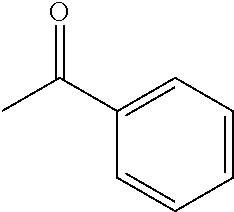
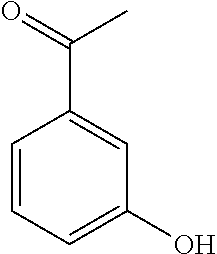


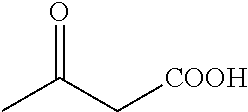
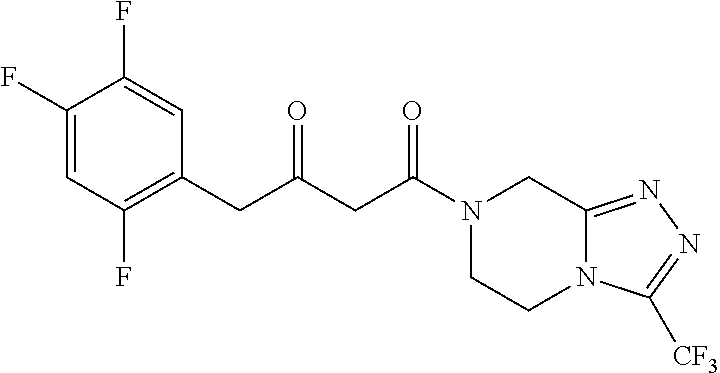
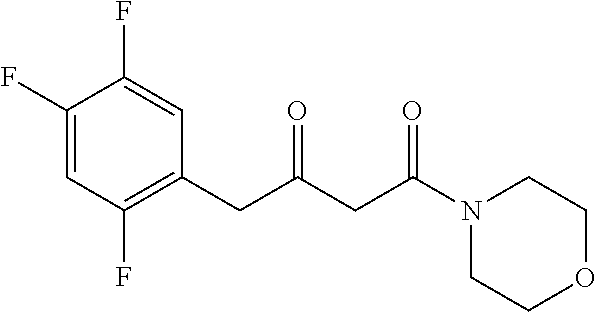
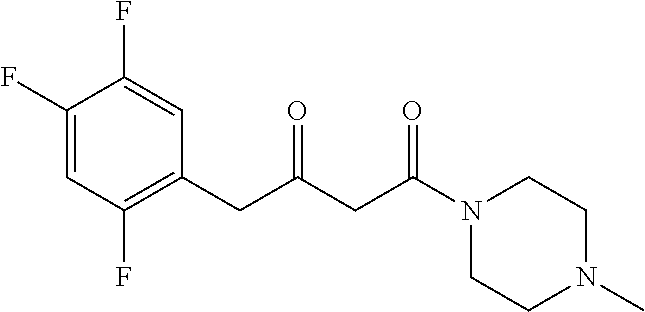

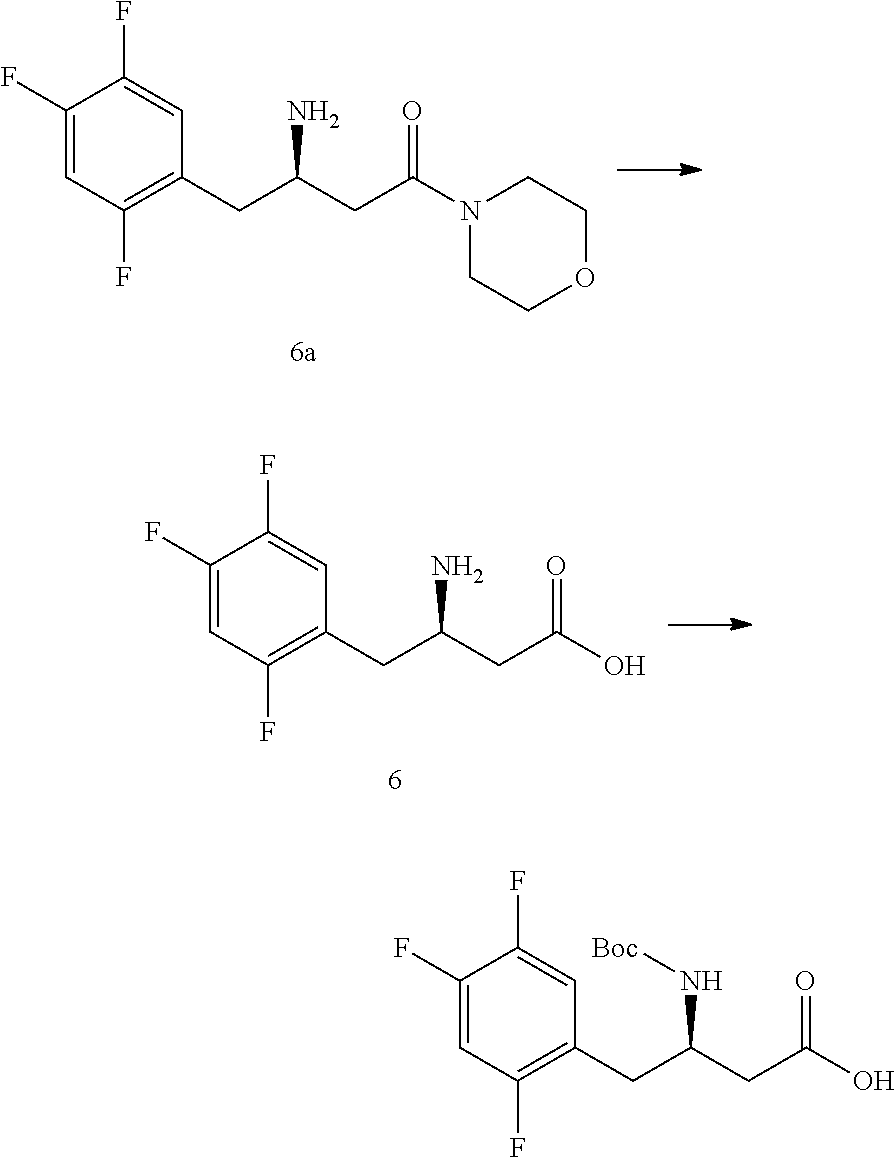


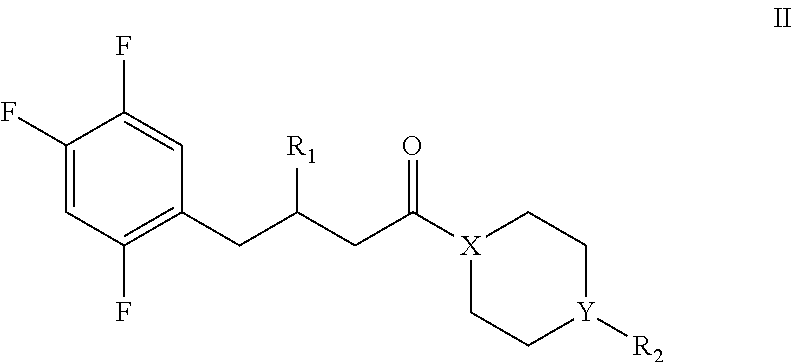


S00001
XML
uspto.report is an independent third-party trademark research tool that is not affiliated, endorsed, or sponsored by the United States Patent and Trademark Office (USPTO) or any other governmental organization. The information provided by uspto.report is based on publicly available data at the time of writing and is intended for informational purposes only.
While we strive to provide accurate and up-to-date information, we do not guarantee the accuracy, completeness, reliability, or suitability of the information displayed on this site. The use of this site is at your own risk. Any reliance you place on such information is therefore strictly at your own risk.
All official trademark data, including owner information, should be verified by visiting the official USPTO website at www.uspto.gov. This site is not intended to replace professional legal advice and should not be used as a substitute for consulting with a legal professional who is knowledgeable about trademark law.